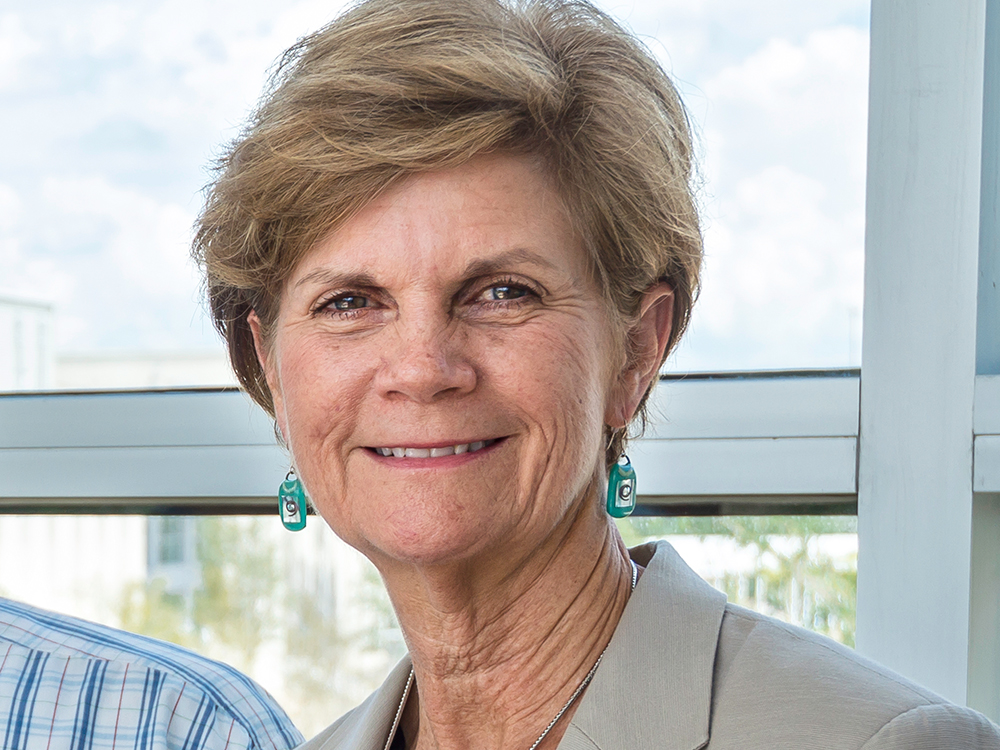Audiology Expert Examines COVID-19 Challenges for Hearing-Impaired
03.09.2022
The COVID-19 pandemic has presented numerous challenges to basic interpersonal communication, especially for people with impaired hearing, due to the prevalence of opaque face masks. The inability to read lips or interpret facial expressions, as well as the dampening of sound, left many struggling to keep up with conversations.
Dr. Linda Thibodeau, a researcher at The University of Texas at Dallas’ Callier Center for Communication Disorders, is an expert on how technology is used to overcome the obstacles faced by hearing-impaired individuals.
 Dr. Linda Thibodeau, professor of speech, language and hearing
Dr. Linda Thibodeau, professor of speech, language and hearing
She said that many people found communicating difficult during the pandemic, even those with sufficient hearing, and that the pandemic taught scientists several things.
“COVID-19 has demonstrated how reliant we are on visual cues to correctly interpret speech and how stressful it is to operate with reduced sources of information when we don’t have facial expressions to work with,” said Thibodeau, a professor of speech, language and hearing in the School of Behavioral and Brain Sciences and director of the Hearing Health Lab.
Last year, Thibodeau and her collaborators published a research article titled “Communicating During COVID-19: The Effect of Transparent Masks for Speech Recognition in Noise,” which examined the ways in which clear facial masks compensated for the difficulties individuals faced during the pandemic. The article was the most read paper in the American Auditory Society journal Ear and Hearing for all of 2021, receiving its Readers’ Choice Award.
“Our research confirmed that speech recognition in noisy environments is reduced by nearly 25% when opaque face masks are used compared to no mask, even for persons with normal hearing,” she said. “The use of masks with a transparent window provides significant benefit not only in speech recognition, but also results in reduced concentration and increased confidence.”
Although the transparent mask muffled the sound more severely than an opaque mask, the visual cues provided by the transparent mask significantly improved overall communication success.
“The ability to communicate effectively is paramount to one’s well-being and quality of life, especially during times of stress,” Thibodeau said. “The use of transparent masks instead of opaque ones could enhance speech comprehension, reduce mental exertion, and, in turn, increase productivity in the workplace and satisfaction with one’s daily life.”
Thibodeau said assistive technology also can be a big help, noting that live transcription apps for smartphones have evolved greatly just in the last few years.
“Some people use a remote microphone system to improve the signal-to-noise ratio,” she said. “At the Callier Center for Communication Disorders, we offer an array of remote microphones specifically designed to integrate with hearing technology, but even smartphone apps that work with the phone’s microphones or that convert voice to text can be a huge help.”
Video demonstrations of the clear mask and the remote microphone technology can be viewed on the Hearing Health Lab website.
Even in the absence of any technological help, Thibodeau offered some speech strategies to make things go more smoothly.
“When I put more pauses between my words — not elongating, but adding more silence — that gives someone more time to piece together what is being said.”
–Stephen Fontenot
Tags: BBS, Callier Center, Dr. Linda Thibodeau